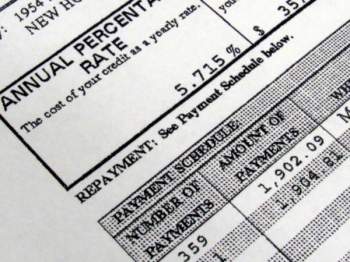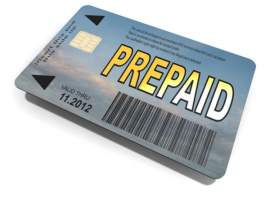
Understanding APR In A Glance

What is APR?
An APR, or annual percentage rate, is the numerical figure associated with the cost of credit. The APR is the yearly amount a consumer will pay for acquiring a loan or using a credit card. In essence, the APR is the interest rate attached to a loan or credit card.
The APR in regards to a credit card is the percentage rate that is attached to any outstanding monthly balance. By law, a lender must disclose the APR to consumers when engaging in financing or a lending practice.
The APR is delivered as the annual percentage rate or cost that a consumer will pay for accessing a credit line. In terms of credit cards, the APR can be divided by 12 to reveal the monthly cost of interest. For example, if an individual opens a credit line with an APR of 20%, the monthly rate attached to any outstanding balance would be 20%12, or 1.667%. This rate is multiplied by the remaining monthly balance to reveal the additional cost of interest.
The percentage of the APR will fluctuate depending on the credit score of the applicant. Those borrowers with higher credit scores will be awarded a line of credit with a lower annual percentage rate and, in turn, those borrowers with lower or worse credit scores will be given a line of credit with a higher APR.
This differentiation in APRs is used by lenders to offset the risk of default: borrowers who are viewed as riskier by the increased probability of default. A higher APR will yield an increased cost to access a credit line, which effectively offsets the losses incurred from default.
What is the purpose of the APR?
The APR allows a lender to profit from their delivery of credit. The APR is the additional amount of money or fees that a borrower must pay to access a credit line. In addition to the benefits offered to the lending company, the APR is also used by borrowers to compare loans and determine the best credit card options.
The APR also impedes a lender from blanketing a stream of financing. The APR dissuades a lender from hiding fees when advertising their stream of credit.
Types of APR
Although the delivery of an APR encourages transparency when evaluating the cost of the loan, there are two types of APR percentages: the nominal APR and the effective APR.
The nominal APR refers to the simple interest rate for one year, while the effective APR is the fee and compound interest rate calculated across a year. The effective APR includes various fees latent in a credit card or loan contract. The fees calculated within the effective APR include various finance charges, activation charges and service obligations. As a result of this inclusion in the other fees attached to a credit agreement, the effective APR is regarded as the mathematically true interest rate for a given year.
The nominal APR is calculated as the rate required for a payment period multiplied by the number of payment periods in a year. Holders of credit should be aware that the majority of credit cards in the United States are quoted in terms of the nominal APR.
This reference is not necessarily reflective of the amount of interest paid on a stable balance over one year. The nominal APR does not include fees latent in the credit contract, such as routine one-time fees which are paid to third parties and penalties such as late fees or service reinstatement fees.
Calculating APR for Credit Card Balances
The APR will affect your credit card bill if you do not pay your debts in full each month. For example, say you have $1,000 charged on a credit card that requires a minimum monthly payment of only $15. If this credit card is attached with a 20% APR and you are only making the monthly payments, it would take nearly 7 years to pay off the debts from just the charges and interest.
Your APR of 20% will be divided by 12 to reveal the monthly interest rate—20/12 equals 1.667% As a result, monthly interest on a balance of $1000 with a 20% APR= $1,000X1.01667= $1,016.67. This calculation simply means that you will pay an additional $16 on a balance of $1,000 with an APR of 20%.



















